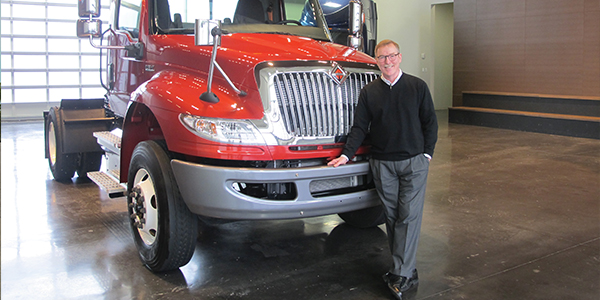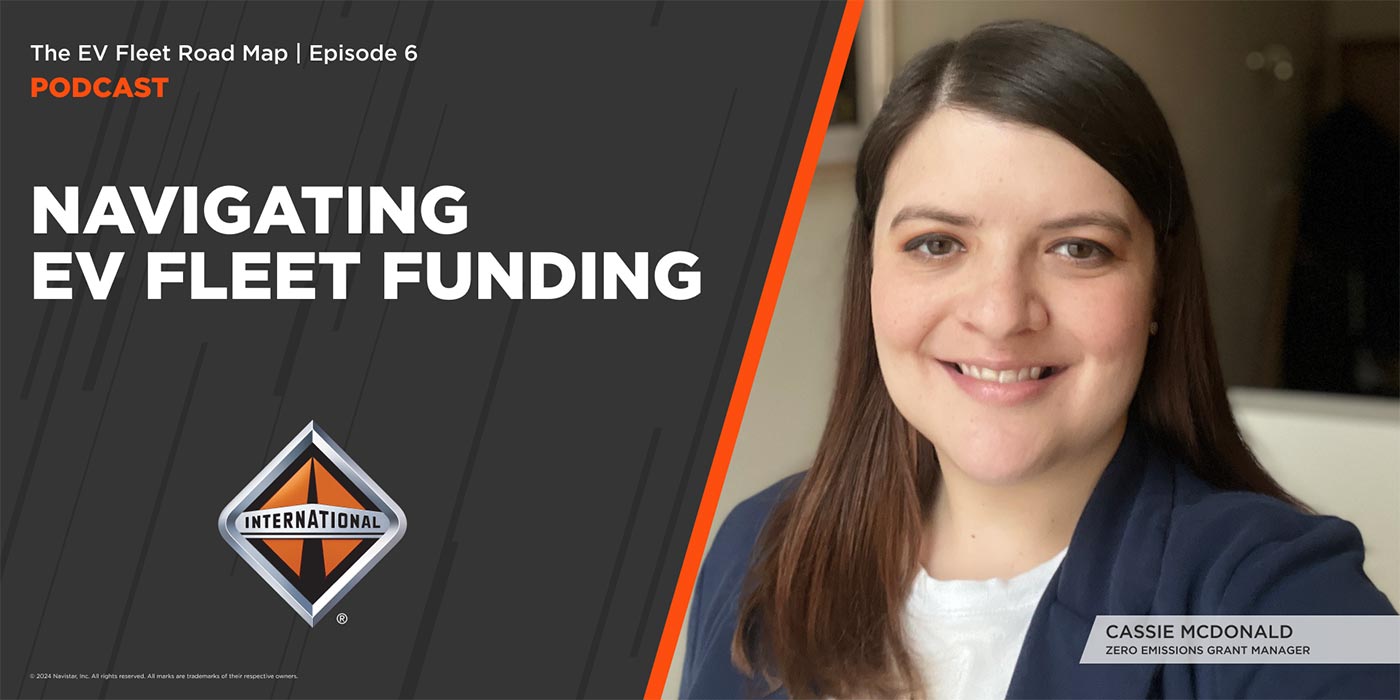The trucking industry has not historically been known for rapid change. But today, multiple technologies are threatening to disrupt the traditional industry with the goal of capturing major chunks of its value chain. How can you tell which disruptive technologies will gain a foothold first?
Troy Clarke, the chairman, president and chief executive officer of Navistar (pictured above), thinks he knows the answer: The “Golden Triangle” where technology, economics and societal needs intersect.
“The author Malcolm Gladwell uses the term ‘tipping point,’ meaning the moment where behavior changes on a mass scale,” Clarke says. “The convergence of these three factors—technological innovation, economic value and societal benefit—is bringing us to a tipping point in our industry.”
A new, disruptive technology needs to do more than simply work as promised, Clarke explains. It also needs to deliver superior economic value and society must accept it, including the regulators who oversee societal interests. When these three factors are aligned, then rapid, disruptive change is much more likely to follow.
As one example, Clarke cites the smartphone—now almost ubiquitous in our society. It brings together multiple technologies, including data storage, digital imaging, network capacity and touchscreen access. It delivers tremendous economic value, thanks to the many free or low-cost apps that save money for consumers and for businesses.
As to societal benefit, Clarke says, the smartphone provides a quantum leap forward in personal computing by expanding people’s access to information and computing tools, on a mass scale.
In the trucking industry, Clarke believes three technologies show the potential to meet this Golden Triangle standard: automation, connectivity and electric propulsion (eMobility).
The first—automation—is advancing steadily, empowered by artificial intelligence and advanced safety systems such as radar, lidar and digital cameras. On the economic front, automated technologies will improve fuel economy, driver comfort and productivity, plus attract more drivers to the profession. On the societal front, automation offers a great opportunity to reduce or eliminate the 94% of traffic accidents that involve driver errors, according to Navistar.
The second technology, connectivity, is also advancing rapidly by using the Internet of Things, including telematics, to extract efficiency benefits, as well as pairing up two or more vehicles and connecting them to the traffic infrastructure.
“Economically, studies show that connectivity can eliminate more than a third of average operating costs,” Clarke says. “Connecting vehicles to the infrastructure can reduce traffic congestion, which otherwise is expected to increase by nearly 50% by 2030.”
The third technology, eMobility, delivers social benefits by lowering emissions. And it is approaching an economic tipping point as the cost of the battery—the most expensive aspect of the vehicle—is coming down rapidly.
Once battery costs come down enough, the economic advantages of electric vehicles will be very clear, Clarke says—at least for certain applications. While their upfront cost will remain higher in the near term, Navistar’s analysis shows that by the year 2020, battery purchase prices, including financing, will be essentially offset by lower fuel and maintenance costs. Once greater scale is achieved, the advantages of electric will only grow.
“The total cost of ownership will reach parity with diesel first in medium-duty applications, including school bus, which are our sweet spot,” Clarke says. “Unlike long haul, medium-duty vehicles won’t require a new nationwide charging infrastructure. This eliminates an important barrier to adoption on a mass scale.”
Based on Navistar’s analysis, Clarke went public last year with the prediction that as of 2025, his company would have more electric trucks on the road than Tesla. This spring, the company completed a national tour with its prototype electric school bus, the chargE, which it co-developed with its global alliance partner, Traton Group (formerly Volkswagen Truck & Bus).
Clarke estimates there will be more disruption and change in the next 10 years than there was in the last 100. To avoid being disrupted, he advises traditional players to look for one or more sweet spots and move ahead quickly whenever possible.
“To beat the disruptors, traditional players need to disrupt themselves first,” Clarke says. “The key is to try new approaches, fail fast and keep refining and innovating.”













